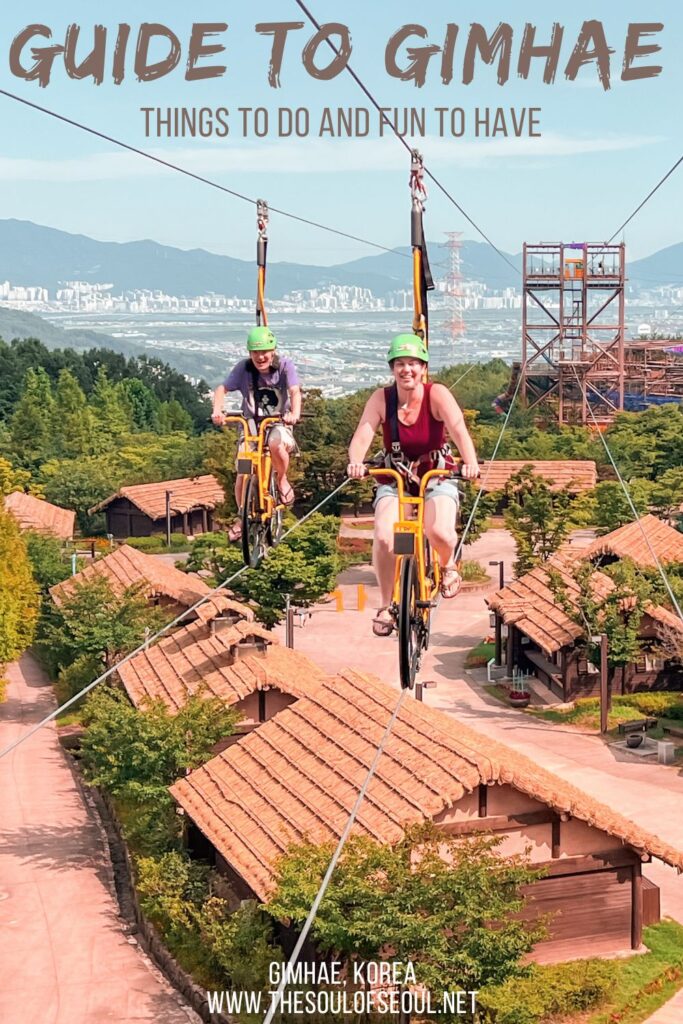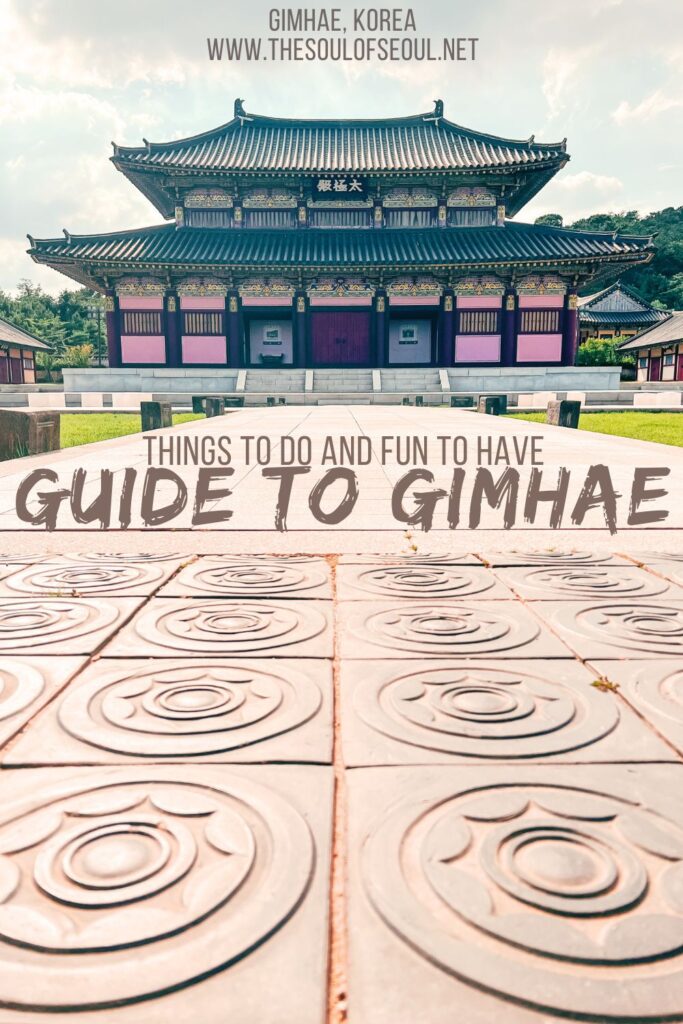Guide To Gimhae: The Historic Places, Spaces & Fun Things Too!
Last Updated on November 25, 2023
Have you been to Gimhae, Korea yet? Often overlooked due to its proximity to Busan, this city, also home to the airport nearest Busan, has some cool things to see that I’ve enjoyed as it’s where my Korean in-laws live. Gimhae is relatively easy to get to and if you’re going to Seoul, you can just take a flight from Gimpo. It’s only 50 minutes and is sometimes even cheaper than the train to Busan!
From museums to fortress walls and an awesome amusement park, there are a lot of cool things to do in Gimhae. The next time you want to head south, maybe head here.
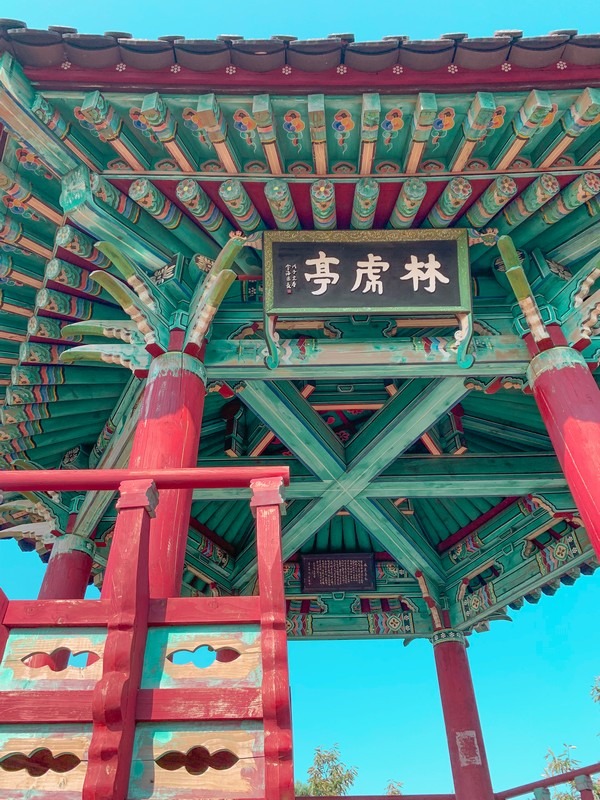

A lot of people pass right through Gimhae and head to Busan, but there are some reasons to check out this city in southern Korea:
- How To Get There
- Where To Stay
- What To See
- Gaya Theme Park (김해가야테마파크)
- King Suro & Queen Heo’s Royal Tombs (수로왕릉)
- Gimhae Folk Museum (김해민속박물관)
- Bunsanseong Fortress (분산성)
- Gimhae National Museum (국립김해박물관)
- Lotte Water Park (롯데워터파크)
- Gimhaesi Weather Change Publicity Experience Center (김해시 기후변화 홍보체험관)
- Nakdong River Rail Park (김해낙동강레일파크)
- Gimhae Buncheong Ceramics Museum (김해분청도자박물관)
- Clayarch Gimhae Museum (클레이아크 김해미술관)
- Gimhae Wood Culture Museum (김해목재문화박물관)
- Gimhae Astronomical Observatory (김해천문대)
- What To Eat
(This post contains affiliate links, which means I receive a certain percentage of a sale if you purchase after clicking at no cost to you. Thank you for your support.)
How To Get There
By Plane: You can fly into Gimhae International Airport from a number of places. From the airport, you can jump onto the Light Rail to go all over the Gimhae area.
By Public Transportation: You can take the subway/Light Rail out to Gimhae from Busan and from the Gimhae International Airport. There are also buses to the city from around the country. Just get tickets to the Gimhae Bus Terminal.
Where To Stay
MU Hotel
If you’re headed to Gimhae, check out MU Hotel. Spacious rooms and comfortable style. It’s a great weekend away from Busan or spot to get away to from anywhere in Korea. A bunch of our musician friends stayed here one year after the Busan Rock Festival that was nearby and it was great. Get ready to check in!
Book a stay at MU Hotel on Booking.com or on Agoda.com
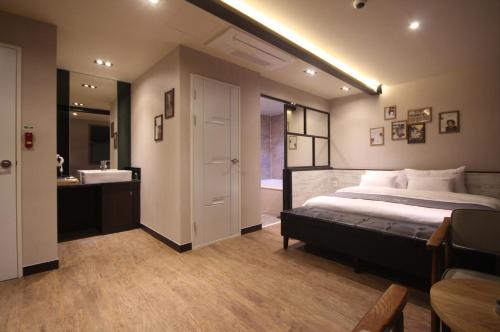
ISquare Hotel
Another great option is ISquare Hotel. This hotel is very close to public transportation and also features a sauna perfect for a relaxing time away. The hotel also has a swimming pool. Who wouldn’t want that? Basically, all of that to say, should you vacation in Gimhae? Yes!
Book a stay at ISquare Hotel on Booking.com or on Agoda.com
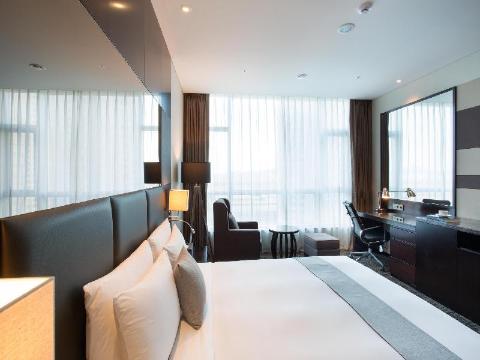
What To See
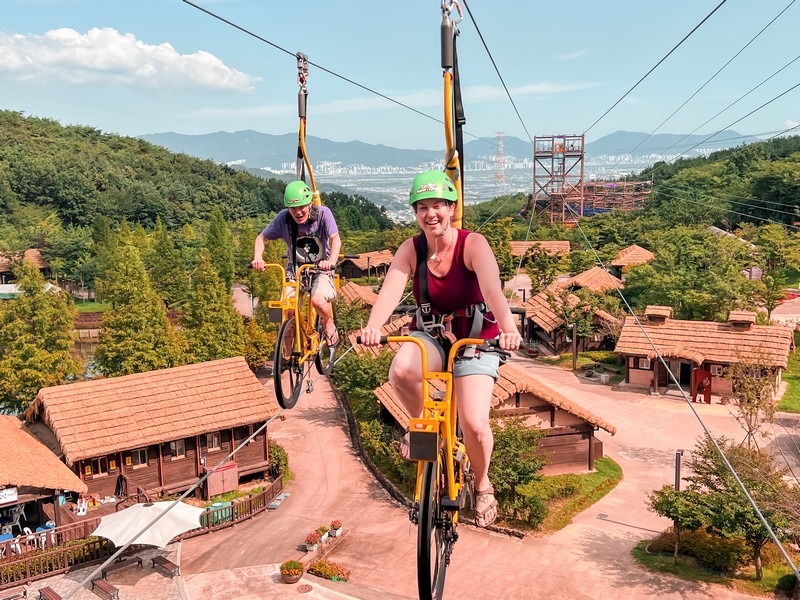
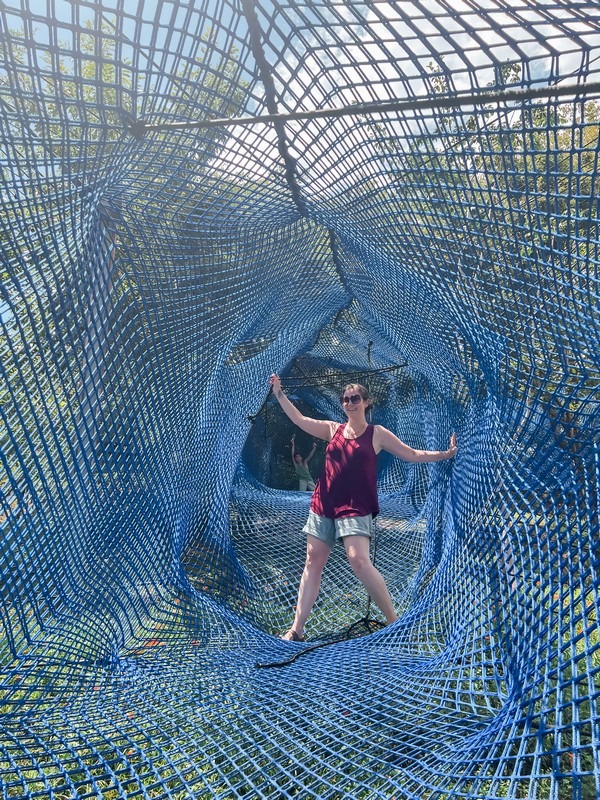
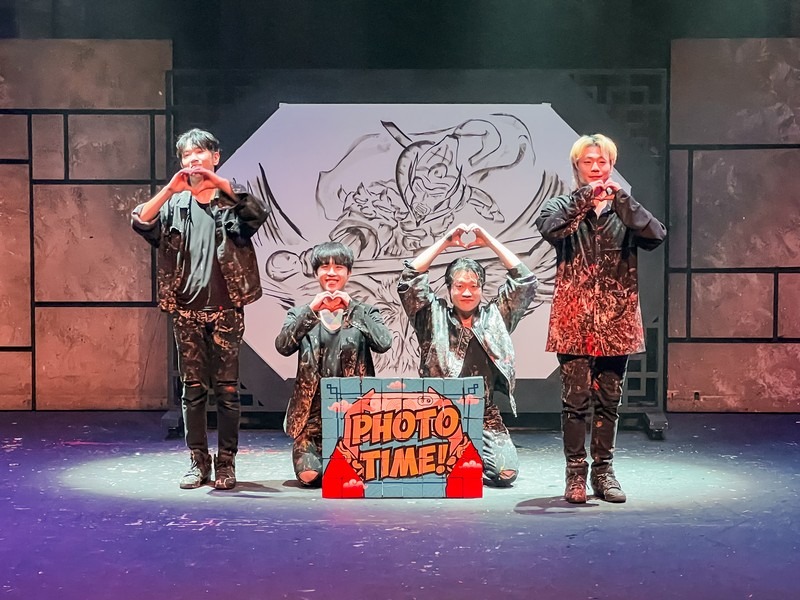
Gaya Theme Park (김해가야테마파크)
Have some kids and want to have a super fun time? Definitely check out the Gaya Theme Park. Rural theme parks can be more fun than you might expect and generally have way less people than the big name ones.
Gaya Theme Park is a multiplex theme park meaning there are rides and experiences like Double Extreme: a high flying bike ride above ground, zip lines, a tower with 72 missions for climbing. There is a ceramics experience center, a warrior experience center, the largest eco-friendly playground in the country and you can even see The Painters, a non-verbal and super fun performance with artists.
- Address: 161 GayaTheme-gil, Gimhae-si, Gyeongsangnam-do (경남 김해시 가야테마길 161)
- Hours: Every day: 9:30am ~ 6:00pm
- Admission: Basic Entrance for Adults: W5,000 and Children: W3,000. Adding on Painters, the extreme experiences, ceramics classes etc., the admission can range from W8,000 to W49,000.
- Discounted Tickets: You can get discounted tickets in advance on kkday

King Suro & Queen Heo’s Royal Tombs (수로왕릉)
According to the legend, King Suro was one of six princes born from eggs that descended from the sky in a golden bowl wrapped in red cloth. Suro was the first born and led the others in setting up the six states of Gaya (가야). What I was most intrigued by when I first visited, knowing nothing about the king or queen buried in the tombs and reading the information there, was that the queen is said to be from the Indian country Ayuta today identified as Ayodhya.
Heo Hwang Ok arrived as an Indian princess and became our Korean Queen Heo Hwang-ok (허황옥). When I first visited, my husband and I weren’t married yet but were engaged and I just loved that there was a multicultural royal family so long ago. The King Suro tomb complex includes traditional buildings and stone sculptures in the shape of a warrior, a literary man, a horse, a sheep, and a tiger. It’s a lovely place to take a walk and learn about the Gaya Kingdom.
- Address: 312 Seosa-dong, Gimhae-si, Gyeongsangnam-do (경상남도 김해시 서상동 312)
- Directions: Walk about 10 minutes out of Royal Tomb of King Suro Station, exit 2.
- Admission: FREE
- Hours: April, October: 8:00am ~ 7:00pm; November – February: 9:00am ~ 6:00pm; March, May – September: 8:00am ~ 8:00pm
Gimhae Folk Museum (김해민속박물관)
Near the King Suro Tomb Complex, stop into the folk museum to see folk relics from the Gimhae region. On the first floor there is food, clothing, shelter, and relics related by music. On the second floor, there are relics related to agriculture.
- Address: 35 Bunseong-ro 261 beon-gil, Gimhae-si, Gyeongsangnam-do (경남 김해시 분성로261번길 35)
- Directions: Out of Royal Tomb of King Suro Station, exit 2. It’s near the tomb site.
- Hours: Tuesday – Sunday: 9:00am ~ 6:00pm
- Admission: Free
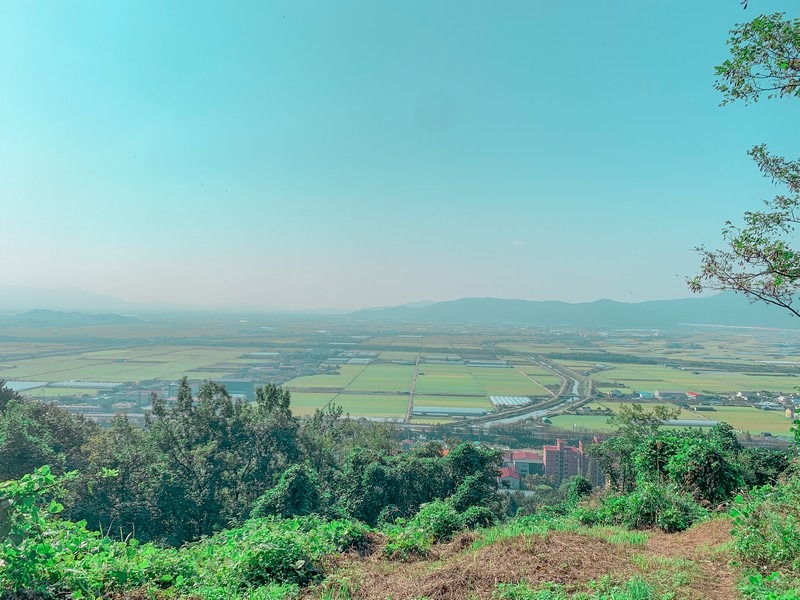

Bunsanseong Fortress (분산성)
Interestingly, it is not clear when this fortress was originally built but it has been assessed and assumed to have been built during the Gaya period from 42-532 so a really long time ago. The fortress was reconstructed and reinforced during the Joseon Dynasty and was again repaired in the late 1800s. Much like other fortress walls around Korea, you can distinguish which parts of the wall were built when based on the size of the stones and how perfectly shaped they are. The more perfect and large, the more recent.
You can find the North Gate of the wall in a very residential area but continue walking up the hillside following the wall and you’ll find more historical parts. Once up the hillside, you’ll also have wonderful views out over the city of Gimhae. Along the way you can find Buddhist hermitages, several traditional buildings as you ascend to the peak of Gujibong (구지봉) at 330 meters above sea level. After the beautiful walk you’ll want to head to the museum in Gimhae because a large amount of relics have been found throughout the years in and around the fortress and they’re showcased there.
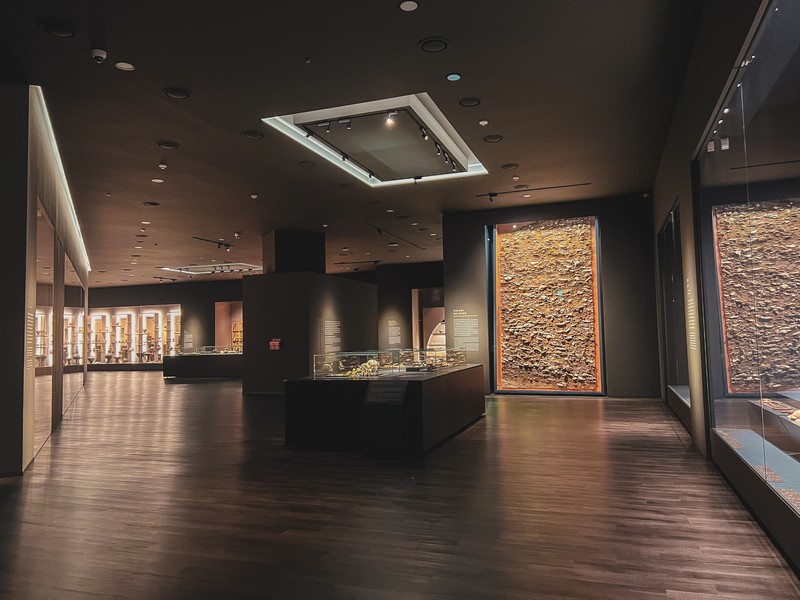
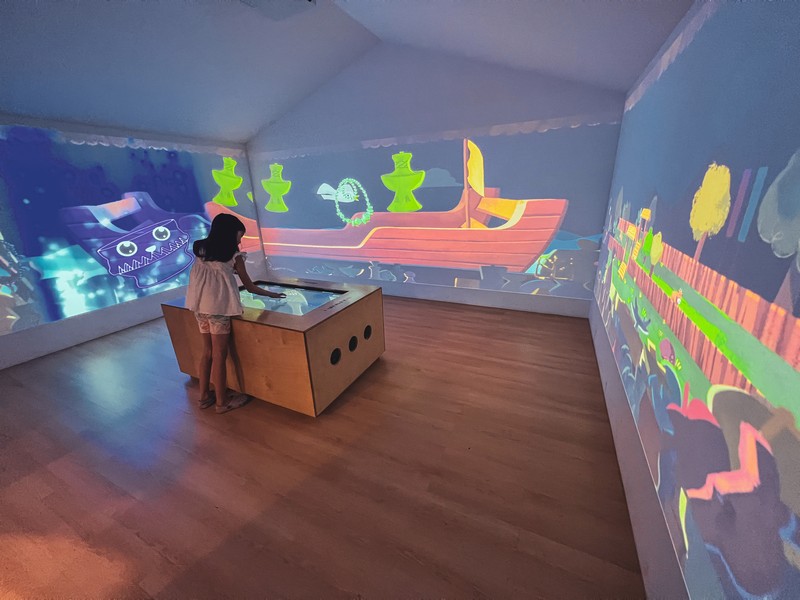
Gimhae National Museum (국립김해박물관)
Built to preserve the research and cultural heritage of the Gaya Kingdom, the museum is at the foot of Gujibong where you may have just come from if you checked out the fortress first. The exterior of the museum is really interesting and showcases black bricks to represent the iron ore and charcoal famous during the Gaya Kingdom.
Inside, the museum houses relics from as far back as the Neolithic Age, Bronze Age, and so on. It’s an impressive collection and pays great homage to the history of the area and the Gaya Kingdom. There’s also a fun children’s museum; it does require a reservation, however, if the spaces aren’t all full, you can go right in so be sure to ask.
- Address: 190 Gayaea-gil Gimhae-si, Gyeongsangnam-do (경남 김해시 가야의길 190)
- Directions: Go out of Gimhae National Museum, exit 2. Cross the stream to find the museum.
- Hours: Tuesday – Sunday: 9:00am ~ 6:00pm (Closed on holidays)
- Admission: Free
- Website: https://gimhae.museum.go.kr/
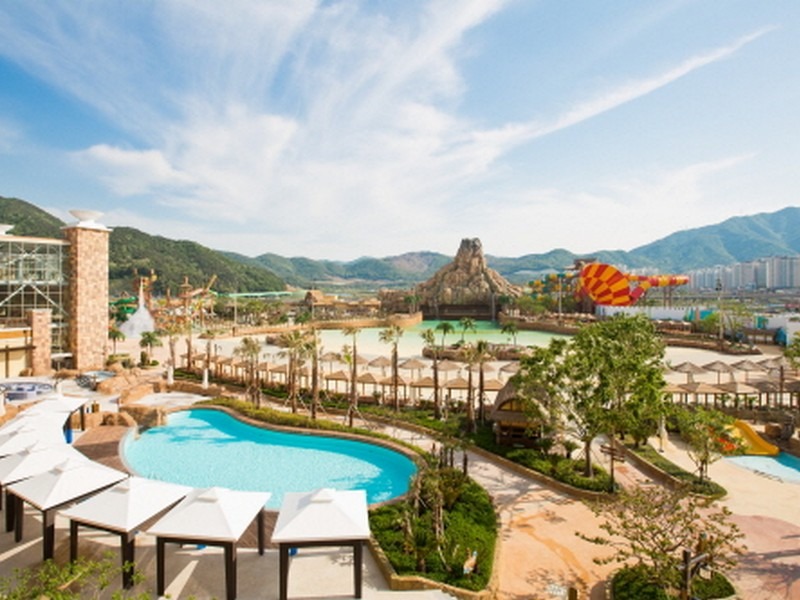
Lotte Water Park (롯데워터파크)
Gimhae is actually home to the largest water park in Korea. Roughly the size of 17 football fields, the water park is home to some of your favorite rides like a 118 meter Tornado Slide, a Tube Slide, and a Tiki River. There are indoor and outdoor wave pools and a kids pool so something for everyone. Fly into Gimhae in the summer and you’ll have a blast… a water blast.
- Address: 555 Jangyu-ro, Gimhae-si, Gyeongsangnam-do (경남 김해시 장유로 555)
- Hours: 10:00am ~ 5:00pm (hours may vary by season so check their website for more information)
- Admission: W30,000 ~ W46,000
- Website: http://www.lotteworld.com/waterpark/index.asp
Gimhaesi Weather Change Publicity Experience Center (김해시 기후변화 홍보체험관)
Opened to help cope with weather change and spreading the green movement, there are exhibits, experiential activities, and education opportunities related to weather helping visitors to better understand the changes in weather and the environment.
- Address: 334 Hwamok-ro, Gimhae-si, Gyeongsangnam-do (경남 김해시 화목로 334)
- Directions: Go out of Buwon Station, exit 2. Get on bus no. 6 to get to the center.
- Hours: Tuesday – Sunday: 9:00am ~ 6:00pm
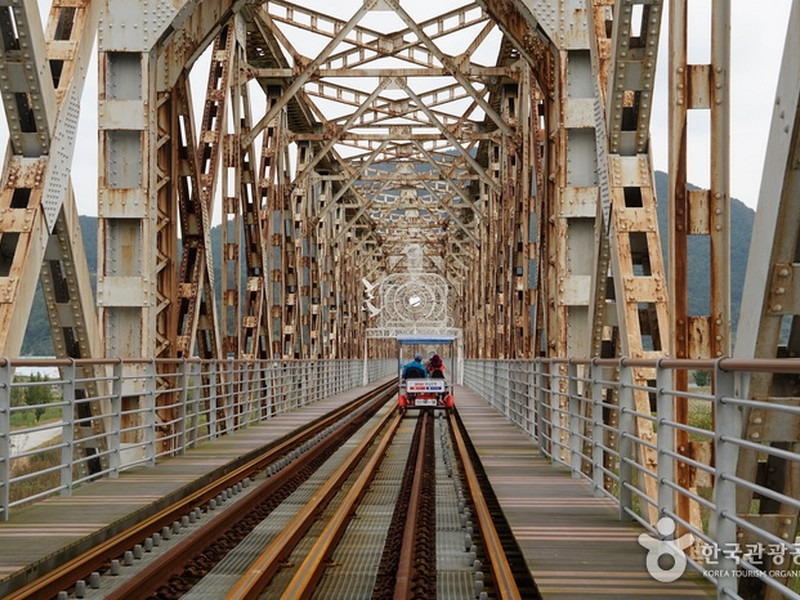
Nakdong River Rail Park (김해낙동강레일파크)
Located along the Nakdong River, hop on a 4-seater rail bike and pedal 3 kilometers along the water feeling the breezes. The railway also goes over a very scenic railway bridge. I should mention the wine in the wine cave… is raspberry wine so expect something sweet. I didn’t realize Korea was so in to sweet wine until I took a wine train ride and it was all sweet sweet sweet.
This was actually selected as one of the regions that offers safer non-face-to-face focused travel where there is not much contact between tourists due to the low density of the natural environment. On that note, there were quite a few places including the fortress wall that were selected in Gimhae because, like I said, it’s just not a huge touristy area but has plenty of fun reasons to go.
- Address: 41 Masa-ro 473 beon-gil, Saengrim-myeon, Gimhae-si, Gyeongsangnam-do (경남 김해시 생림면 마사로473번길 41)
- Hours: Every day: 9:00am ~ 8:00pm (The last Monday of every month is closed.)
- Admission: Railbike for 2: W15,000; Railbike for 3: W19,000; Railbike for 4: W23,000

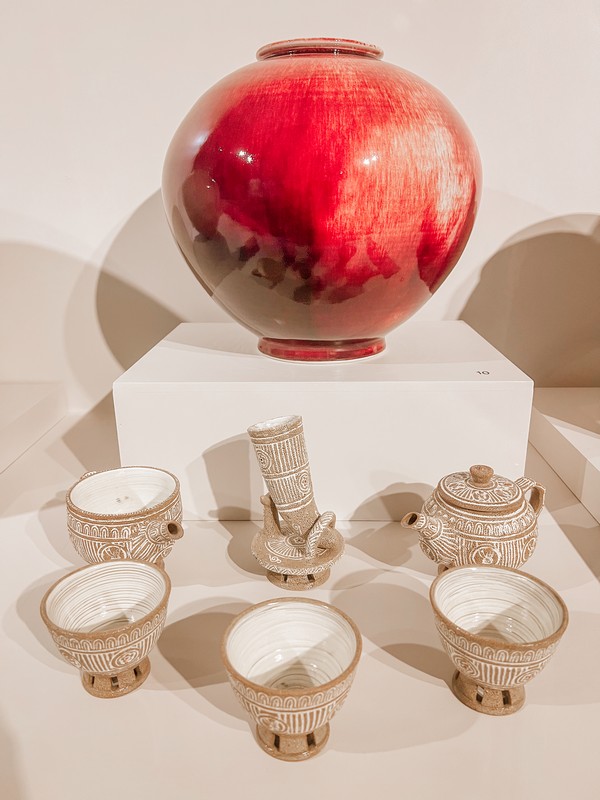
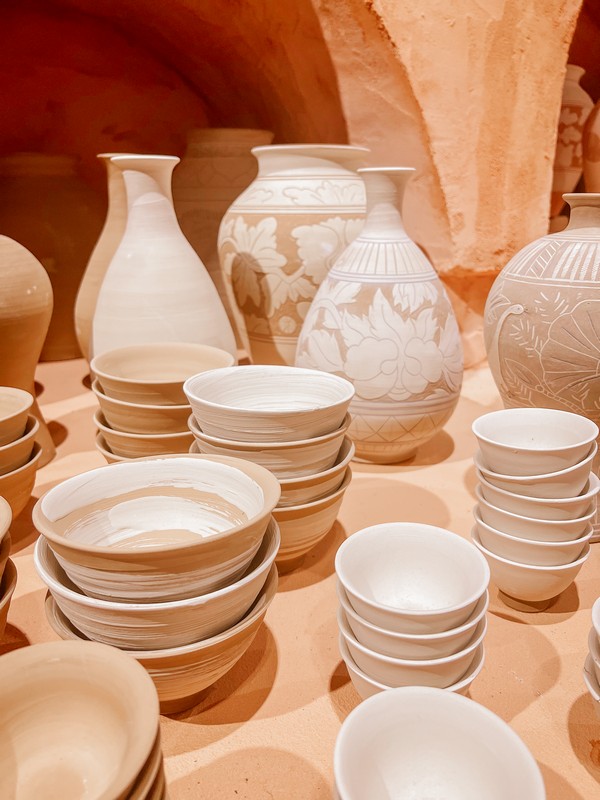
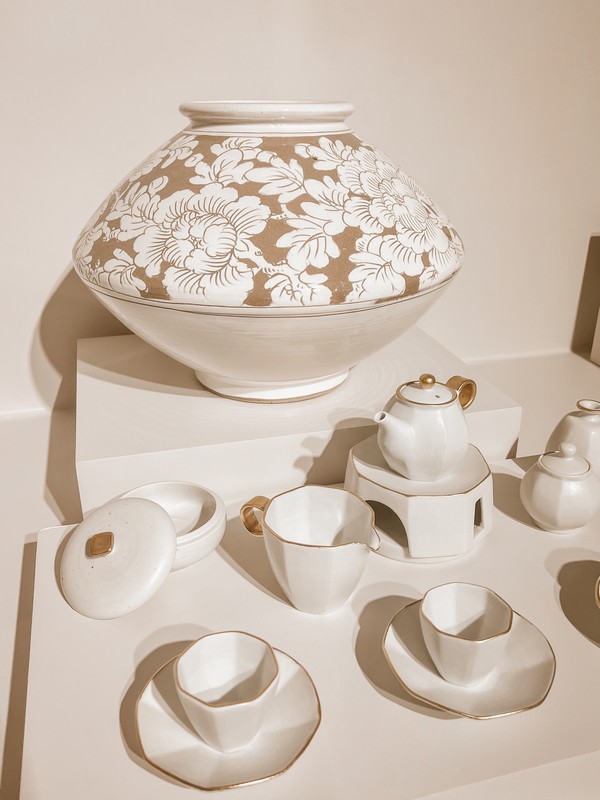
Gimhae Buncheong Ceramics Museum (김해분청도자박물관)
Not a large museum, but where you should start when you’re going to the more experiential Clayarch Museum just next to it, the Gimhae Buncheon Ceramics Museum is focused on displaying the ceramic culture and history of the Gimhae region. Learn about Gaya ceramics, Goryeo Cheongja, Joseon Buncheong Ceramics, and Baekja.
Buncheong ceramics specifically refers to a type of ceramics that is made by covering grey or grayish black clay with white clay and glazing before firing. Go here first to learn and then head to Clayarch for the various experience programs they have.
- Address: 190 Gaya-ae-gil, Gimhae-si, Gyeongsangnam-do (경남 김해시 가야의길 190)
- Hours: Tuesday – Sunday: 9:00am ~ 6:00pm
- Admission: Free


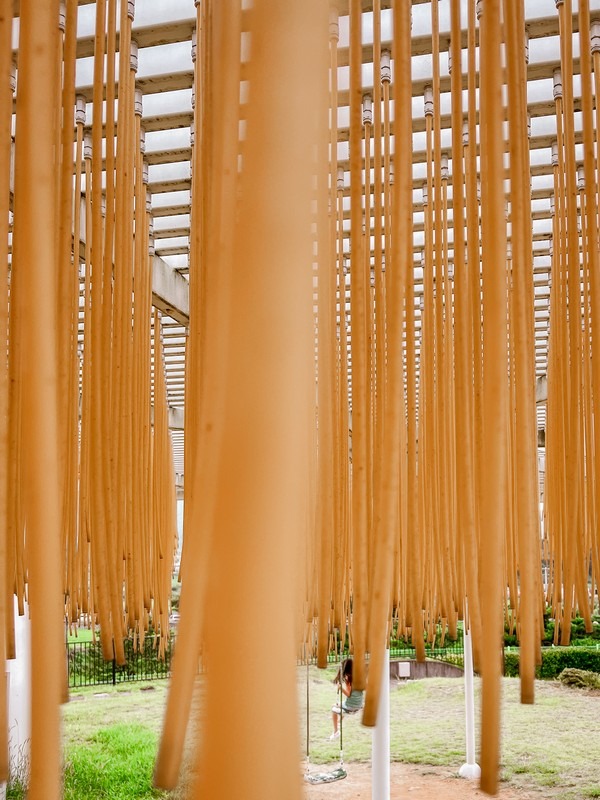
Clayarch Gimhae Museum (클레이아크 김해미술관)
If you’re interested in ceramics and architecture, then you need to visit this museum. The Clayarch Gimhae Museum and experiential spaces integrate science with art and education. The museum hopes to play a leading role in the development and education on architectural ceramics. There are various experiences from decorating mugs and ceramic dolls to marbling dishes, pottery classes and more. You can find out more on their website and sign up before you go or get there and see what is going on when you’re there.
- Address: 275-51 Jillye-ro, Jillye-myeon, Gimhae-si, Gyeongsangnam-do (경상남도 김해시 진례로 275-51 클레이아크 김해미술관)
- Hours: 10:00am ~ 6:00pm
- Days: Closed Mondays, January 1, Lunar New Year, and Chuseok
- Admission: Adults: W2,000; Children: W500
- Website: www.clayarch.org
Gimhae Wood Culture Museum (김해목재문화박물관)
Another great experiential space in Gimhae is the Gimhae Wood Culture Museum. Visit the exhibition space to understand the physical properties of wood, see some beautiful pieces of furniture and wood pieces and then go to the experiential space. There are woodworking classes, and a “Growing Tree Playground” for the kids.
- Address: 5-49 Gwandong-ro 27-beongil, Gimhae-si, Gyeongsangnam-do (경남 김해시 관동로27번길 5-49)
- Hours: Tuesday – Sunday: 9:00am ~ 6:00pm
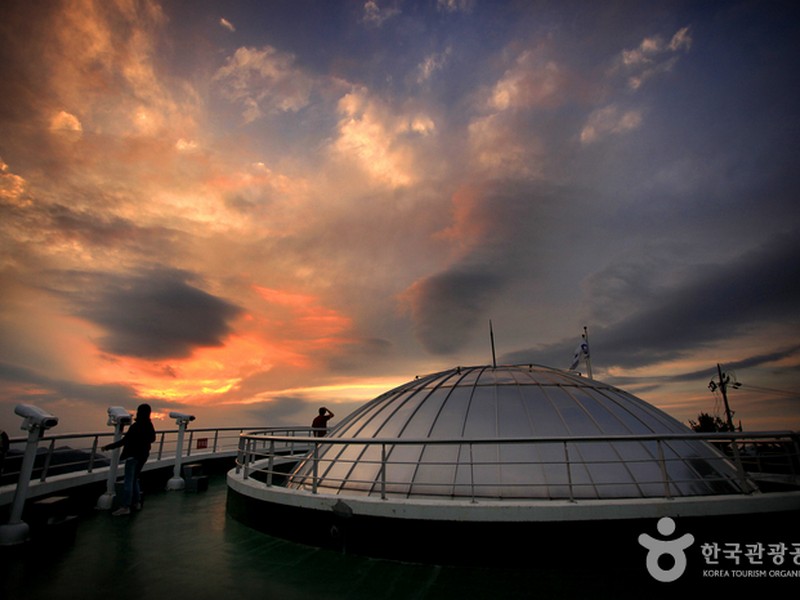
Gimhae Astronomical Observatory (김해천문대)
The Gimhae Astronomical Observatory is shaped like an egg as an ode to King Kim Suro, the founder of the Garak Kingdom, who was born from an egg according to legend. King Suro was married to Queen Heo Hwang Ok, an Indian princess who made her way to the peninsula using the stars to navigate thus, the Gimhae Astronomical Observatory has a lot of importance in the area. The observatory is located on the top of Bunseongsan Mountain and offers some gorgeous views out over Gimhae.
- Address: 254 Gaya thema-gil, Gimhae-si, Gyeongsangnam-do (경상남도 김해시 가야테마길 254)
- Hours: 2:00pm ~ 10:00pm
- Days: Closed Mondays and New Year’s Day
What To Eat
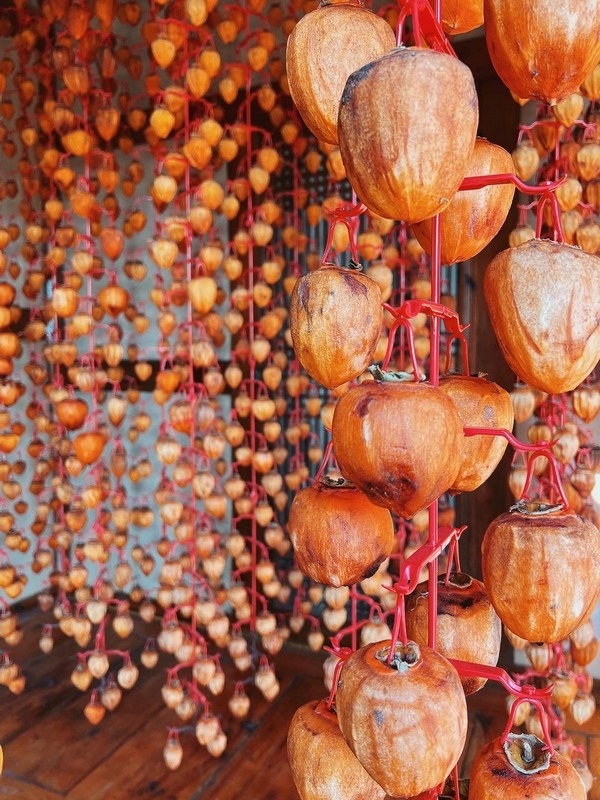
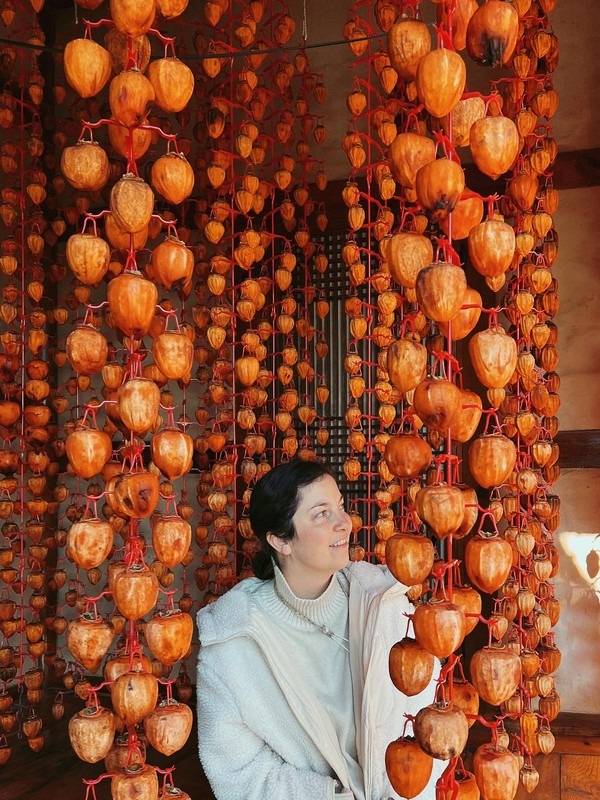
Persimmons (감)
Gimhae is known for having some very sweet persimmons. Because of their mild maritime climate, the conditions are optimal for growing fruit. Their specialty is persimmons… the sweetest in Korea. Usually, there is a Persimmon Festival each November.
Mountain berries (산딸기)
Gimhae is famous for the sweet fruits, and Korean raspberries, or mountain berries can be found in a variety of places in Gimhae. You can also try what those berries are turned into: a Korean sweet wine, or bokbunja. There’s a wine cave at the Nakdong Rail Park that is great for trying the berries, or visit the Sangdong Raspberry area.
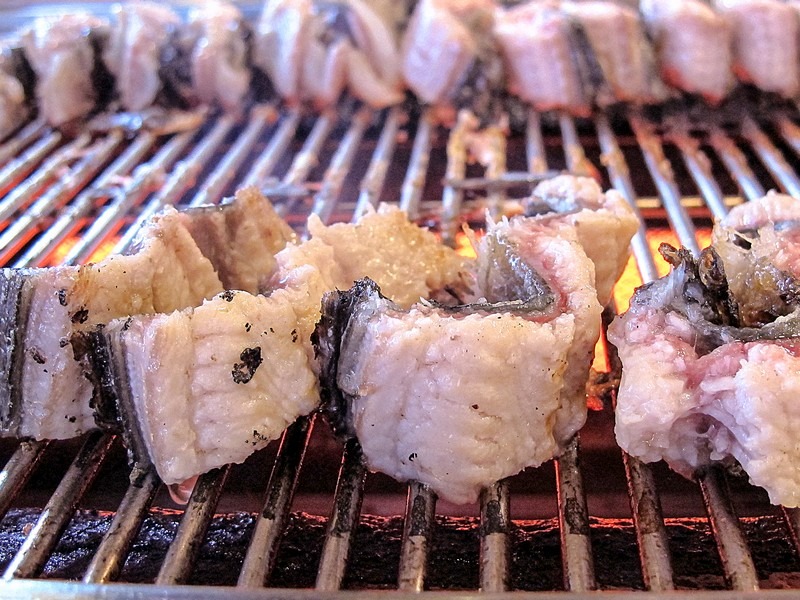
Eel (장어)
While you can try eel all over Korea, in Gimhae, you can visit the Buram Eel Town, a well-known food alley in the area. Broiled eel specialty restaurants are concentrated in this area and you’ll have no problem getting a seat because there are 40 places to choose from. The eel here is well known for its fresh taste. It’s THE place to eat eel.
- Address: Singman-ro 348 beon-gil, Gimhae-si, Gyeongsangnam-do
- Directions: Walk straight to Buram Eel Town from Buram Station, exit 1.
Did you like this post? Pin iT!
